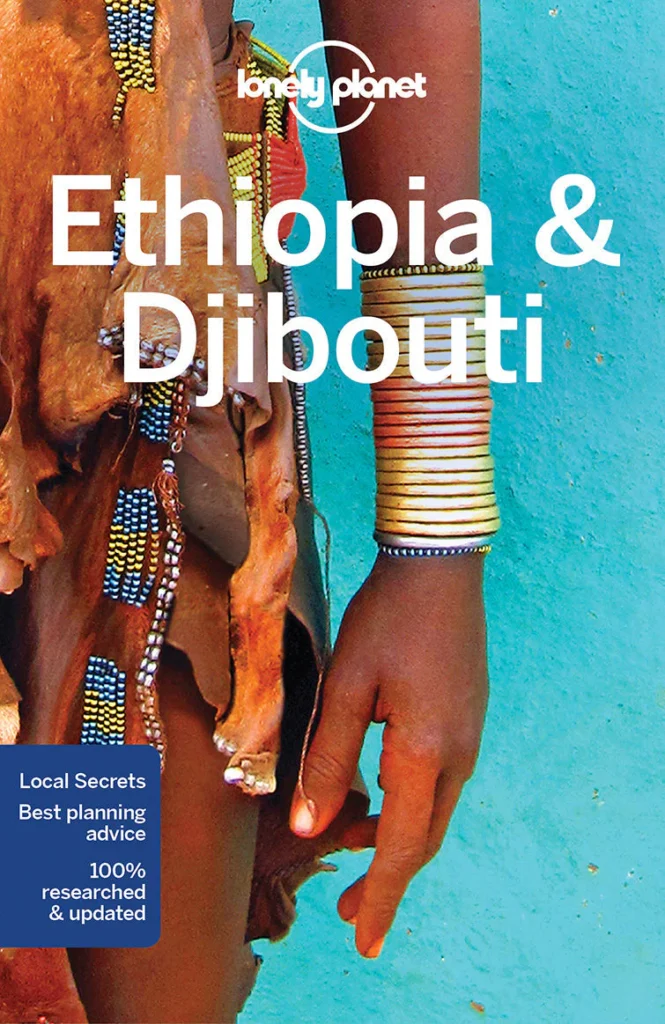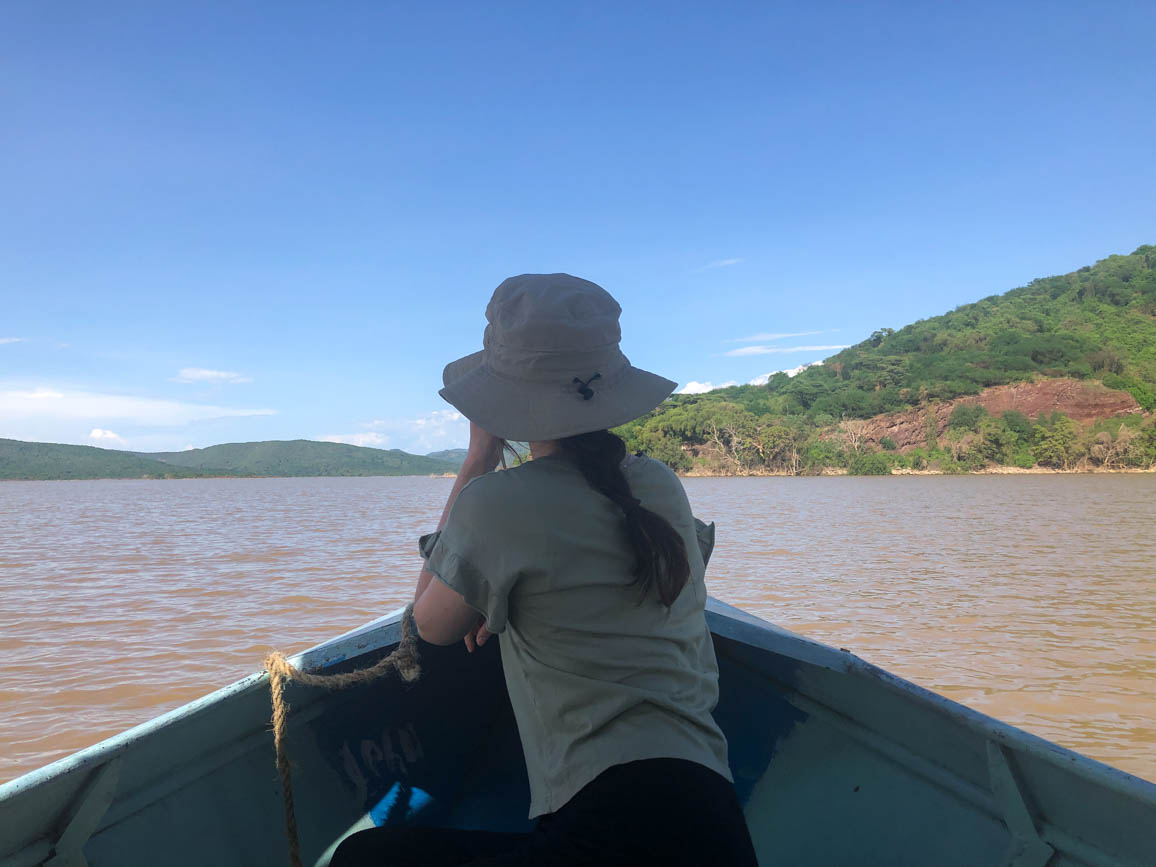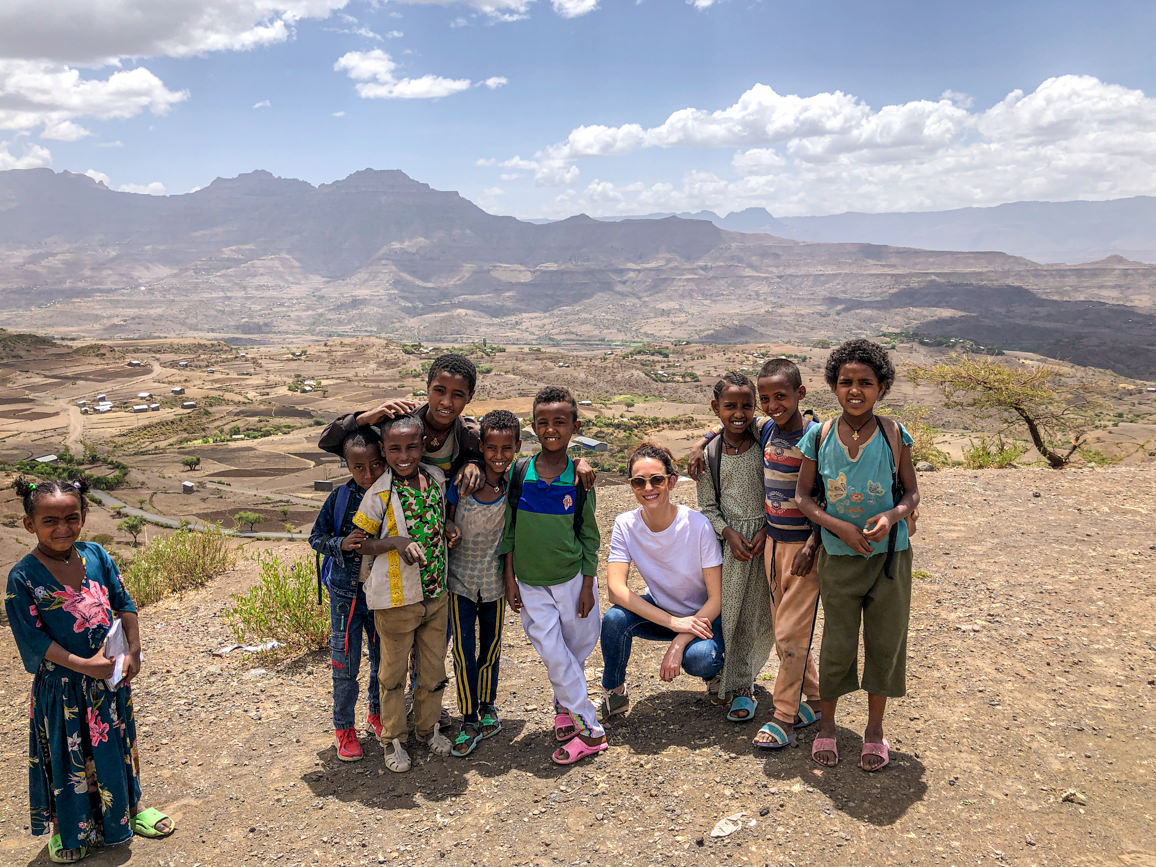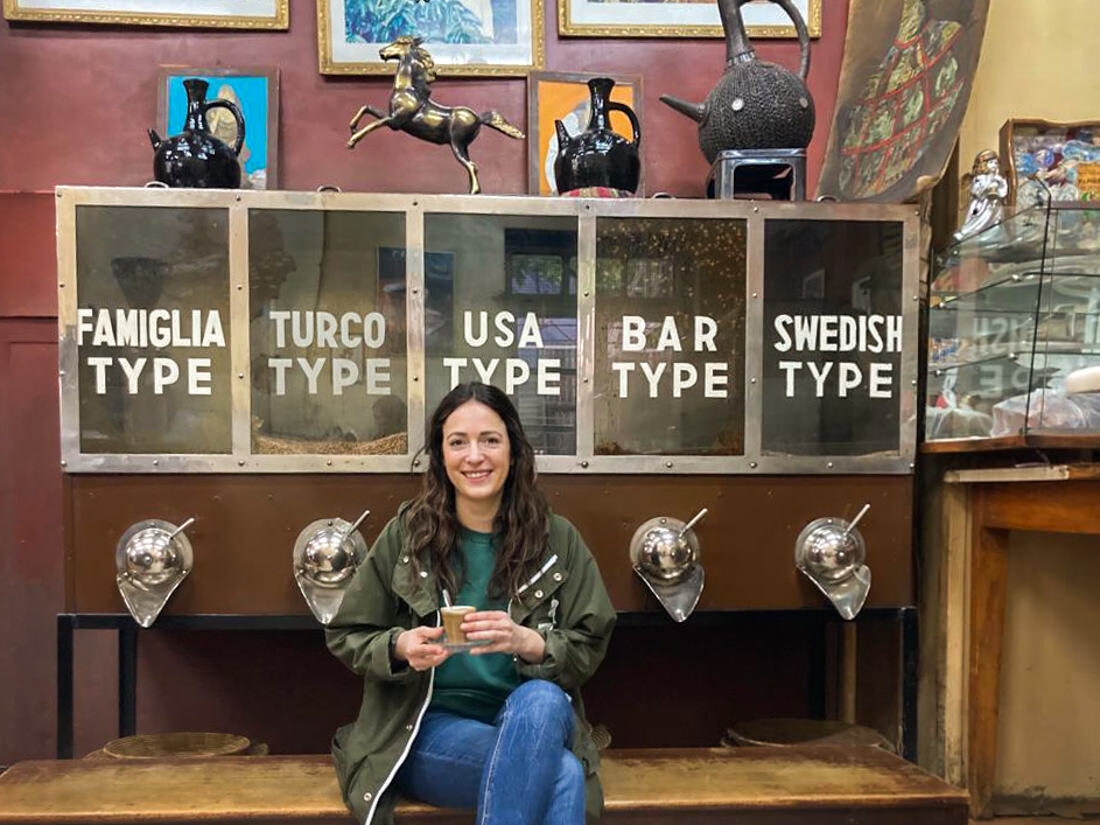
What to do in Addis Ababa, the bustling capital of Ethiopia
Addis Ababa, the bustling capital of Ethiopia, is changing at a rapid pace. With a pleasant climate, it offers numerous cultural attractions such as the Ethnological Museum or the National Museum, among many others. The city is also renowned for its lively food and nightlife scene and has a good number of restaurants, bars and clubs where you can sample the famous Ethiopian cuisine. In this travel guide, I’ll walk you through what to see and do in Addis Ababa, where to eat the best Ethiopian food and where to stay in the capital of the country. Along with some travel tips to navigate the city, I’ve also included a map so you can easily pinpoint all the spots mentioned throughout this post. Are you ready to dive in?
Throughout this trip, I used the Ethiopia & Djibouti guidebook by Lonely Planet to plan our stay and make the most out of it. I hope you’ll find it helpful too!
Disclaimers:
- I visited Ethiopia, including Addis Ababa, during the months of March and April 2023. This post features the latest information available to this date.
- Please note that this post includes some affiliate links. This means that, at no additional cost for you, I earn a commission if you make a purchase. In case you have any question about the companies advertised here or my status as an affiliate, please do not hesitate to contact me.
- You can find my Ethiopian stories and adventures under these folders on Instagram (Ethiopia, Ethiopia II, Ethiopia III).
***
***
What to see and do in Addis Ababa, the Ethiopian capital
Best time to visit Addis Ababa + some travel tips
Ethiopia’s climate varies significantly across different regions. In the case of Addis Ababa, which is located in the large central highland region at more than 2.300 meters above sea level, the climate is cooler than in other parts of the country, with average annual temperatures around 15-20°C. Note that the rainy season usually takes place from June to September. Overall, October to March would be an ideal period to visit the capital of Ethiopia given the generally pleasant weather.
This is precisely when most Ethiopian festivals are celebrated, including:
- Leddet or Genna (January 7th): it would be the equivalent of Ethiopian Christmas.
- Timkat (January 19th): it symbolizes the baptism of Jesus in the River Jordan.
- Meskel (September 27th): Ethiopian Orthodox followers commemorate the discovery of the True Cross upon which Jesus Christ was crucified. In the evening of Meskel, people gather to light large bonfires.
- The Great Ethiopian Run (end of November): this 10-km road running event taking place in the capital of Ethiopia has become the largest road race in Africa.
In other news, be cautious when exploring Addis Ababa and never walk alone at night as petty crimes such as pickpocketing, purse snatching, and theft from vehicles are common. Violent crime, though less frequent, does occur. Hence, visitors should be vigilant and avoid displaying signs of wealth.
Finally, I suggest that you check with your home country’s travel advisories about the required vaccinations a few months before traveling to Ethiopia. Further, take all the necessary travel precautions, including getting health insurance or stocking up on medicines. For example, I carried anti-diarrheal tablets in my suitcase, and I’m glad I did as I had an upset stomach twice during our trip!
For extra peace of mind, you can calculate how much you would pay for your health insurance with the SafetyWing widget below.
History of Addis & how long to stay
Addis Ababa, also referred to as አዲስ አበባ in Amharic, Addis Abeba or simply Addis, is the largest city and the capital of Ethiopia. With a population of around 5.7 million as of 2024, Addis is one of the largest cities in Africa as well. It is also known as the political and diplomatic capital of the continent because the headquarters of the African Union (AU) and the United Nations Economic Commission for Africa (UNECA, in the Africa Hall) are located here.
Meaning ‘New Flower’ in Amharic, one of the official languages in the country, Addis Ababa lies on a well-watered plateau surrounded by hills and mountains in the geographic center of Ethiopia. Under the rule of Emperor Menelik II towards the end of the 19th century, Addis became the new capital because of its beauty, hot springs and pleasant climate, replacing nearby Entoto.
Thanks to its captivating energy, vibrant cultural and economic life, travelers to Addis will find everything from fabulous museums to delicious Ethiopian food and a fascinating nightlife scene. However, the beauty of Addis Ababa might be more difficult to appreciate, which is why many tourists try to stay as little time as possible in the capital of Ethiopia.
That being said, I believe that spending two full days in Addis Ababa would suffice. In our case, that’s how we planned our Ethiopian itinerary: we stayed in Addis Ababa for the weekend upon arrival, and then we used it as a base in the middle (after exploring Lalibela) and at the very end of our trip (after discovering the Omo Valley and southern Ethiopia).
This is an overview of our stay in Addis:
- Day 1 in Addis Ababa: National Museum of Ethiopia + Addis Ababa University + Meskel Square + eating out to try the famous Ethiopian food
- Day 2 in Addis Ababa: Unity Park + sampling Ethiopian cuisine
- Miscellanous days in Addis Ababa during the middle and end of our trip: massage + shopping
Top attractions in Addis Ababa
Addis Ababa is a vast city offering enough sightseeing for a couple of days. Almost all the tourist attractions such as the main museums and churches are scattered around the city center and Piazza, although others are concentrated in Arat Kilo and Siddist Kilo (to the east of Piazza and north of the center).
Let’s discover the top attractions in Addis Ababa, the capital of Ethiopia, from monuments and museums, to parks and religious temples worth visiting and even shopping opportunities:
Monuments 📸
During your stay in Addis, you might notice the following landmarks around the Ethiopian capital city:
- The Derg monument, a reminder of the communist regime that ruled the country from 1974 until 1987.
- The Lion of Judah statue, a symbol of the Ethiopian monarchy for centuries.
- The Yekatit 12 monument, that commemorates the thousands of innocent Ethiopians who were killed by the Italians in retaliation for an attack in 1937.
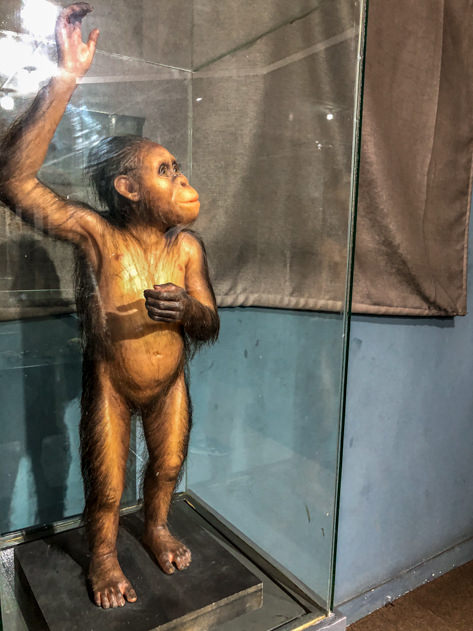
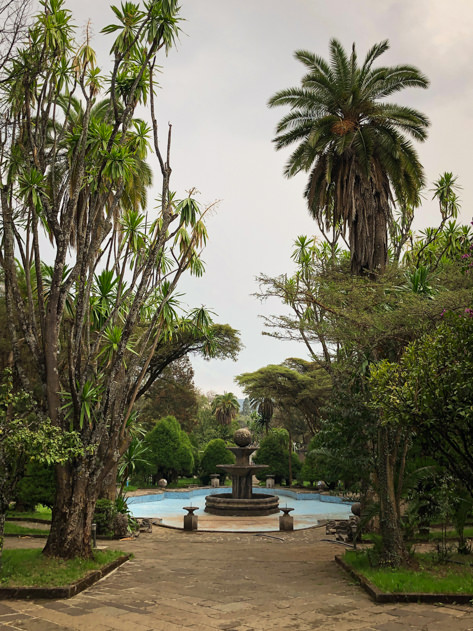
Museums 👹
From our ancestor Lucy at the National Museum of Ethiopia to the interesting artifacts at the Ethnological Museum, Addis Ababa offers a museum heritage unrivalled in sub-Saharan Africa. The following are the most popular museums you will find in the capital city:
- Ethnological Museum: this public institution, which was once the palace of Emperor Haile Selassie, now houses magnificent treasures such as anthropological, musicological and cultural objects. In it, you will find an exhibit about the history of the palace, the library of the Institute of Ethiopian Studies (IES), objects and crafts from the people of Ethiopia as well as religious art. Located in the campus of the Addis Ababa University (AAU) and surrounded by tranquil fountains and gardens, this was the first university museum in Ethiopia. Before entering the museum, you will notice a spiral staircase pointing towards the sky that was built during the Italian occupation of the country. A lion of Judah sits proudly on the last step, symbolizing the Ethiopian victory.
- National Museum of Ethiopia: even though the collection treasured by this museum is considered one of the most important ones in sub-Saharan Africa, many objects lack adequate information and lighting. As a matter of fact, the highlight of this museum are the remains of our 3.5 million old ancestor Lucy (known as Dinkinesh in Amharic) and at first I walked by her without even noticing. 🙂 In addition to the underground section dedicated to Paleontology, which is why Ethiopia is often referred to as the land of origins or the cradle of humanity, visitors can also discover a wide range of objects from sumptuous royal artifacts, to beautiful Ethiopian art, costumes, musical instruments or a collection of ancient craft items.
- Red Terror Martyrs’ Memorial Museum: this moving memorial space next to Meskel Square is dedicated to the victims of the Derg government under the period known as Red Terror (1974-1987). According to the estimates, around half a million Ethiopians were killed. The museum displays bones and skulls, coffins, photographs and torture instruments.
- Other museums you may visit during your stay in the capital city include the Addis Ababa Museum (overlooking Meskal Square but in a rather poor state), the Ethiopian Science Museum or the Zoological Natural History Museum (housed in the Addis Ababa University campus).
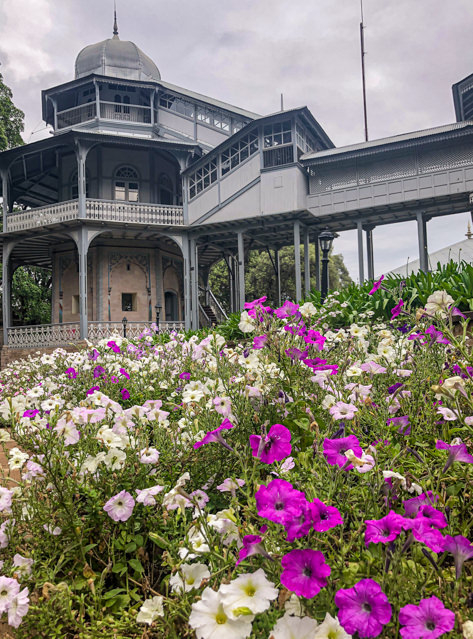
Parks and squares 🌳
The capital city of Ethiopia features a number of parks to enjoy outdoor activities. These are the most popular ones:
- Addis Ababa Park: this rather small green area is located in front of the Presidential Palace.
- Entoto Natural Park: come here to enjoy a panoramic view of Addis Ababa from this park on top of Mount Entoto.
- Meskel Square (also spelled as Meskal): vast square in the city center that is a popular gathering spot for festivals or demonstrations. Not to be mistaken with the ‘mezcal‘ drink from Mexico. 🙂
- Unity Park: inaugurated in 2019, this was one of our highlights during our visit to the capital of Ethiopia. Located in the premises of the Grand Palace, this vast park is composed of various historical, natural, and cultural sites including two zoos, an indigenous and botanical garden, Emperor Menelik II’s Palace Complex, the imposing Throne Hall and Banquet Hall, the Regional Pavilions or the Unity Archive. You can buy your tickets to access Unity Park and easily park your vehicle there. Near the entrance, you will notice a big Ethiopia sign, which is great to take an Instagrammable picture during your visit!
Religious temples ✝️
Religion in Ethiopia consists of a number of faiths, the most numerous being Christianity (including the teachings of the Ethiopian Orthodox Church) followed by Islam. When visiting the capital of the country, you will find that religious temples feature among some of the top attractions in Addis Ababa.
- Holy Trinity Cathedral: this massive and ornate temple is the second-most important place of worship in Ethiopia, after the Old Church of St Mary of Zion in Aksum, located in the northern part of the country. This cathedral is a popular site because it houses the granite tombs of Emperor Haile Selassie and his wife Empress Menen Asfaw as well as colorful murals and stained glass windows. Near the cathedral you will also find a museum displaying religious objects, a cemetery or the tomb of British suffragette Sylvia Pankhurst.
- St. George Cathedral: dedicated to the patron saint of Ethiopia, Saint George, after the victory over the Italian troops in 1896 in Adwa, this temple was commissioned by Emperor Menelik II. Once the construction was completed in 1911, Empress Zauditu was crowned here in 1916, and then Emperor Haile Selassie followed suit in 1930. The ticket to visit the Cathedral includes access to the museum, which displays magnificent crowns, sacred parchments, ceremonial parasols and the elaborate clothing for the coronation ceremonies.
- Other religious buildings in Addis Ababa worth mentioning include Entoto Maryam, a colorful church on top of the Entoto hills that also comprises a museum as well as the tombs of Emperor Menelik II and his wife Empress Taytu, the Grand Anwar Mosque, the Medhane Alem Cathedral, and Washa Mikael, a rock hewn church dating from the 12th century which reminds those you could find in Lalibela, although in a much more precarious state. In case you’d like to venture outside the capital city, visiting the Debre Libanos monastery as well as its museum and nearby waterfalls northwest of Addis is a popular day trip.
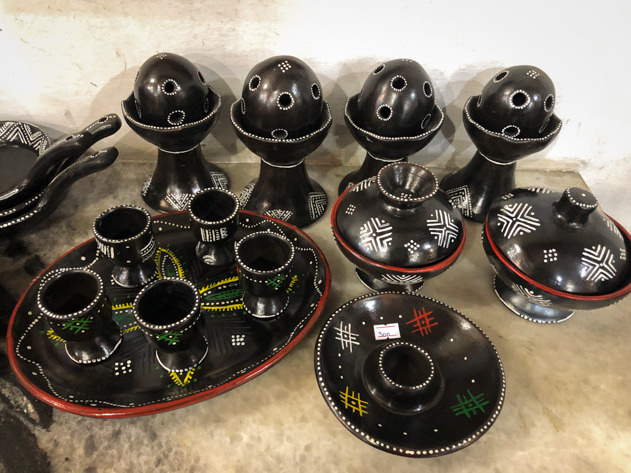
Shopping and other activities 🛍️
The bustling city of Addis Ababa is a great place to buy some souvenirs and experience the life of an African metropolis. Here are some places worth exploring during your stay:
- Entoto Beth Artisans: we bought beautiful and authentic Ethiopian handicraft in this cute store at the end of our trip. Other shops worth exploring include Book World, Sabegn, Shiro Meda market, soleRebels for footwear, the art studio at Studio 11 or the St George Gallery.
- Mart under the Wassamar Hotel: if you’d like to bring some famous ground Ethiopian coffee back home or any other local products, you could come here as we did. Other recommended supermarkets include Ethio, Novis Market and Shi Solomon Hailu.
- Merkato: located west of Addis, this vast open-air marketplace is reputedly the largest market in Africa. It seems that you can find anything from local spices to silver jewels or recycled sandals! That being said, use extreme caution in this busy area and beware of your belongings while walking around because of pickpockets.
- Signature Salon & Spa: we had a relaxing massage here after our trip to Lalibela. Other spots that came recommended were the Boston Day Spa and the Sheraton Hotel, which offers massage treatments at its Aqua Club spa.
Where to eat in Addis Ababa to try the best Ethiopian food
The capital city of Addis is famous for its lively food and nightlife scene and offers a good number of restaurants, bars and clubs to immerse yourself in the Ethiopian culture. It’s probably the best place in the country to taste the national cuisine!
In case you’re curious about Ethiopian food and which traditional dishes you should order while visiting the country, I suggest you browse the food section on my Ethiopia destination page.
Here are plenty of options to get you started depending on what you’re craving. Enjoy!

☕ Cafeterias to drink Ethiopian coffee
Considered as the birthplace of coffee, it should come as no surprise that drinking the famous Ethiopian coffee called buna is a deeply-rooted tradition among locals in the country.
Actually, Ethiopians place high importance on their buna ritual, which is a traditional coffee ceremony to show respect and hospitality to family and friends. It always involves a female figure who first spreads fresh grass and flowers on the floor and table, before burning incense. While the aroma fills the room, she roasts, grinds and brews the coffee beans. Finally, the coffee is served in small cups (you’re normally expected to drink three of them), along with snacks such as ambasha (a sweet flatbread), bobolino (fried dough bread similar to a donut), kolo (roasted barley) or popcorn.
In case you’re interested in trying the reputed Ethiopian coffee, the following cafeterias that can be found around Bole Rd and Piazza should be a good starting point: Chaka Coffee (I had a macchiato, a fasting fir-fir and an egg sandwich), Choche Fine Coffee, Cupcake Delights Bakery, Galani Coffee, Infini Coffee Bar (I ordered a macchiato and an egg croissant), La Parisienne, National Café, Oslo Café and Tomoca (this widely known Ethiopian coffee shop was founded in 1953; they have various branches, including in Unity Park, but we went to the ones around Piazza and Namibia St; highly recommend this place!).
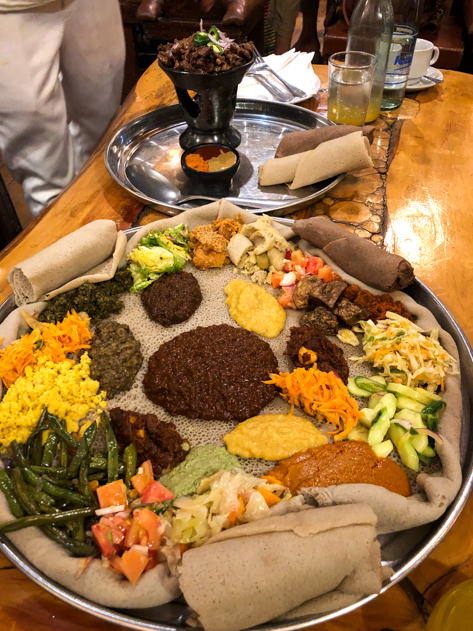
Most of the best restaurants in Addis Ababa, to either try the famous Ethiopian food or just international cuisine, are mainly located around Bole Rd and Cameroon or Namibia St. They are often frequented by well-off locals and expats.
🇪🇹 Restaurants to taste the Ethiopian cuisine in Addis Ababa
- Elsa Restaurant: simple open-air restaurant popular among locals, expats and tourists.
- Itegue Taitu Hotel: most clients come to the restaurant in order to eat the vegan lunch buffet that is served every day of the year.
- Kategna: modern restaurant offering traditional Ethiopian food (kitfo -similar to steak tartar- is highly popular here). You can either dine-in, although they also do catering, delivery and even let you organize your own event. Kategna has various branches across the city of Addis Ababa.
- Yod Abyssinia: this traditional restaurant was our personal favorite. It might be too touristy, but we loved the experience so much, that we came here twice during our stay in Addis. They serve all kinds of Ethiopian food and drinks, including honey wine (tej) while you enjoy the live music show with dancers, musicians and singers starting at 7.30pm (watch this video with the performance). I highly recommend this place if you visit the capital of Ethiopia!
- 17 17: this community bar and restaurant (known as kebele) is a locals’ favorite. You can either dine indoor or out in the patio. Bring your own meat (you can buy it right in front), and the cook will grill it for you. Ask for a beer and some injera, and lunch is ready!
- 2000 Habesha: this cultural restaurant offers a culinary experience starting at 8pm. Traditional Ethiopian dishes are served while dancers, musicians and singers perform on stage. The show does only take place for dinner though, not during lunch time.
🍽️ Restaurants to eat international cuisine
For your ease of reference, I’ve sorted the various international restaurants you can find in Addis Ababa by cuisine depending on what you feel like having.
- Burgers & international cuisine: Akwaba (we had burgers here upon returning from Lalibela), Backyard, Kuriftu Diplomat Restaurant (panoramic views from the 5th floor of the Boston Day building), Lime Tree (the Sunday brunch is very popular), Lucy Gazebo & Restaurant, New York, New York, Raizel Café, Roomi Burger.
- Chinese cuisine: China Bar & Restaurant.
- French cuisine: La Mandoline.
- Indian cuisine: Jewel of India, Sangam Restaurant, Shaheen (located within the premises of the Sheraton Hotel).
- Italian cuisine: Antica Restaurant (pizzeria), Avanti Restaurant & Wine Bar, Effoi (pizzeria), Makush Art Gallery & Restaurant, Stagioni (also within the Sheraton Hotel).
- Middle Eastern cuisine: Sana’a Restaurant.
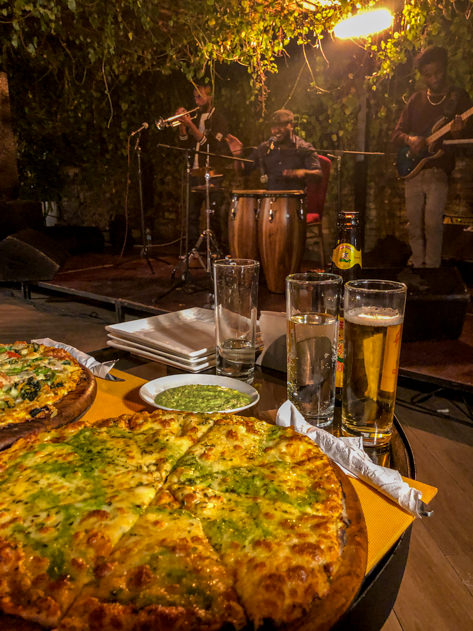
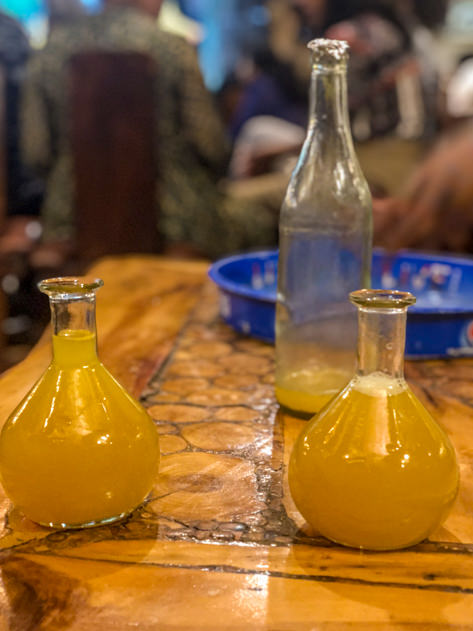
🍸 Bars to enjoy the Addis nightlife
For a unique evening in Addis Ababa, a good starting point is to go to a tej bet and have a tej (or honey wine) and then enjoy live music in an azmari bet (a bar). Here are some options where you could have a drink and/or dance the night away in the capital of Ethiopia.
- 🪩 Clubs: Club Illusion, Club H2O, Flirt, Stockholm Elegance Lounge, The Platinum night club.
- 🍹 Pubs & bars: Beer Garden, Black Rose, Union Cocktail Bar & Restaurant (excellent bar overlooking Meskel Sq), 360 Lounge at the Monarch Parkview Hotel (great rooftop where we had drinks and pizza while listening to live music).
- 🍯 Tej bets: Tobia Teje House (considered the best tej bet in Addis to try the famous tej; note that these places are typically owned by women yet patronized by mostly men).
- 🎼 Traditional dance & live music: Fendika (azmari bet and cultural center where you will find Ethiopian traditional objects and live jazz music), La Gazelle Piano Bar (jazz music every night), Yewedale.
You can also stay up to date with the latest trends via the monthly newsletter What’s Out Addis.
Do you like my content? Subscribe to my newsletter to stay tuned.
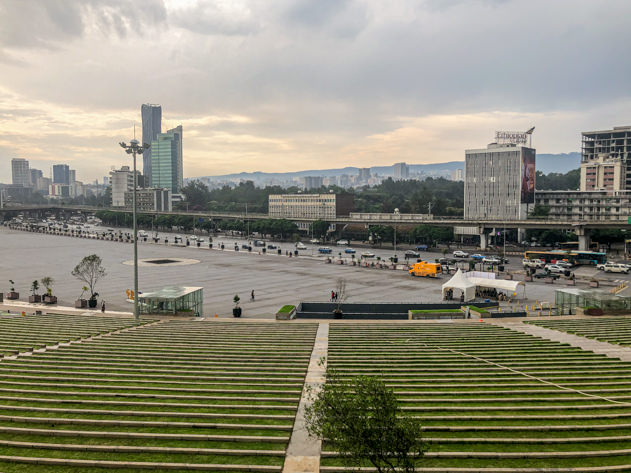
Where to stay in Addis Ababa, the capital of Ethiopia
During our various stays in Addis throughout our Ethiopia trip, we slept at our friend’s apartment in the Bole district. Hence, I wouldn’t be able to personally recommend an accommodation in Addis. That being said, based on my trusted Ethiopia & Djibouti guidebook by Lonely Planet, I listed below a few hotels sorted by price range that you might consider booking while you’re visiting the capital of Ethiopia. Enjoy your stay!
- Cheap accommodation ($): Ankober Guest House, Baro Hotel, Polaris Pension, Selam Pension, Wim’s Holland House (camping), Wutma Hotel.
- Medium-range hotels ($$): Bow Hotel B&B, Caravan Hotel, GT Guesthouse, Itegue Taitu Hotel, La Source Guest House, Stay Easy, Weygoss Guest House.
- Luxury hotels ($$$): Addissinia Hotel, Adot-Tina Hotel, Capital Hotel & Spa, Desalegn 2 Hotel, Ethiopian Skylight Hotel, Golden Tulip, Haimi Apartment Hotel, Hilton Hotel, Hyatt Regency Addis Ababa, Sheraton Addis, Radisson Blu Addis Ababa.
In case you’d like to look for more accommodation options in Addis Ababa, you can always browse Airbnb or Booking.
Browse my Ethiopia destination page for more content about this fascinating country!
Ethiopia itinerary in 2 weeks & travel tips
Ethiopia trip highlights: my top 7 experiences
Exploring southern Ethiopia: ethnic tribes of the Omo Valley & safaris in national parks
Lalibela, a mystical UNESCO World Heritage site
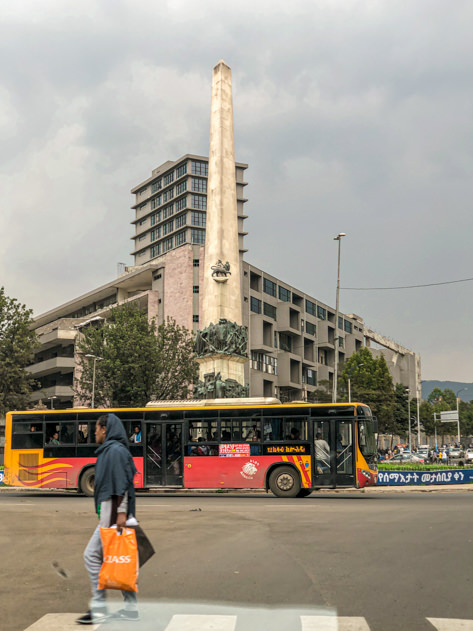
How to get around Addis Ababa, Ethiopia
Navigating Addis can be tricky because of its impossible traffic and difficulty in understanding the street signs or even finding an actual address. As a matter of fact, locals including taxi drivers just know the names of a few main streets. Hence, you should be creative when asking to go to a certain place. Instead, point to other reference points such as famous hotels, malls or restaurants. For your information, I pinned all these helpful locations in the map below so you can get around Addis like a true local!
Indeed, the capital city is huge and disorderly and dividing Addis Ababa into districts makes it easier to get around:
- City center: roughly between Churchill Avenue and Gambia Street. You will find numerous government and commercial buildings in this area.
- Piazza: this northern district owes its historical and architectural legacy to the Italian occupation. Located on the hill that rises at the northern edge of Churchill Avenue, it houses cheap hotels as well as plenty of bars and cafes.
- East of Piazza: some landmarks in this area include the Addis Ababa University and various museums. The Arat Kilo and Siddist Kilo roundabouts are two useful reference points. Menelik II and Meskal Sq lead further south.
- Southeast: this district revolves around Bole Road (also known as Airport Road since it will take you all the way to the Addis Ababa airport). It’s mushroomed rapidly, with many new luxury restaurants, bars, cafes and shopping malls.
Let’s now see the various ways of getting around the massive city of Addis Ababa in more detail:
- 🚌 By bus: in Addis, you will find various bus services depending on the distance you’ll be traveling. For shorter distances (for example to Awasa, Debre Zeyit, lake Langano, Nazret or Shashemene) buses depart from the bus station near Ras Mekonen Ave. If you’ll be exploring further destinations (say Arba Minch, Harar, Gonder or Meskel), some recommended bus companies include Autobus Terra (the long-distance bus station being north of Merkato), Selam Bus or Sky Bus. If you wish to get around Addis Ababa by bus, you can hop on and off the endless blue and white vans that go all over the capital city; they can be found in major road intersections.
- ✈️ By plane: the capital of Ethiopia is well connected to other cities around the world through both international and domestic flights to Addis Ababa offered by Ethiopian Airlines. Some of these destinations include Africa, the Middle East, Paris or Washington DC. Note that most of the hotels in Addis offer a shuttle service to and from Bole International Airport (ADD). You could also take a yellow taxi upon arrival to the terminal.
- 🚕 By taxi: when in Addis Ababa, you can either take a standard yellow taxi or use the local ridesharing app called ZayRide. Uber doesn’t operate in Ethiopia yet. You could also hire a taxi for a few hours if you wish to explore various city landmarks or go on a day trip.
- 🚃 By tram: there are roughly two lines (the blue one running from Menelik Square in the north to Kaliti in the south, and the green line connecting Ayat in the east to Tor Hailch in the west). Even though this light rail system tram is more popular among locals than tourists, it may be useful at some point to get away from the traffic.
Addis Ababa map
As I mentioned earlier, getting around the capital of Ethiopia isn’t that obvious. That’s why I created this saveable map where I pinned all the locations that I mentioned throughout this blog post. Use it to plan your next trip to Addis Ababa!
How did you like this travel guide to explore Addis Ababa, the capital of Ethiopia? I hope it was useful to help you plan your trip! Feel free to leave your questions and comments below.
***
✈️ Curious to know where I’ll be traveling next? ✈️
Stay tuned by following me on social media (Facebook, Instagram, X) and subscribe to my newsletter for regular updates!
In the meantime, safe travels around the world!
***
| GET READY FOR YOUR NEXT TRIP! |
|---|
| Browse my travel resources page to plan your upcoming trip. |
| Feeling adventurous? Book any outdoor activities worldwide with Manawa! |
| Get medical or health insurance via SafetyWing for extra peace of mind. |
| Looking for sports equipment? Feel free to browse my Decathlon profile for inspiration. |
| Use the Anaya Touring or Lonely Planet travel guidebooks to plan your trip. They’re really comprehensive and helpful! |
| Create travel memories you’ll never forget! Book things to do, attractions and tours around the world with Get Your Guide. |

